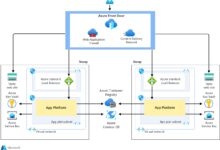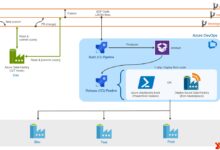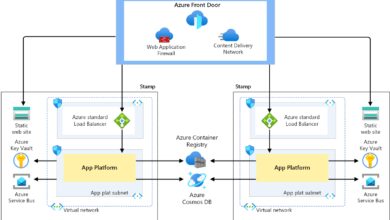Azure Cost Calculator: 7 Powerful Ways to Master Cloud Spending
Managing cloud costs doesn’t have to be a guessing game. With the Azure Cost Calculator, you can predict, plan, and optimize your Microsoft Azure spending with precision and confidence.
What Is the Azure Cost Calculator?

The Azure Cost Calculator is a free, web-based tool provided by Microsoft that helps users estimate the cost of running services and resources on the Azure cloud platform. Whether you’re planning a new project, migrating existing workloads, or scaling your infrastructure, this tool gives you a clear financial forecast before you commit any resources.
How the Azure Cost Calculator Works
At its core, the Azure Cost Calculator operates by allowing users to select specific Azure services—like virtual machines, databases, storage, networking, and more—and configure them according to their projected usage. The tool then applies current pricing data to generate a detailed cost estimate.
- Users can add multiple services to a single estimate.
- Configuration options include region, instance size, usage hours, and data transfer volume.
- Real-time pricing updates ensure accuracy based on the latest Azure rates.
This makes it an essential first step in any cloud planning process, especially for teams needing to present budget proposals or conduct cost-benefit analyses.
Differences Between Azure Cost Calculator and Total Cost of Ownership (TCO) Calculator
While both tools help estimate costs, they serve different purposes. The Azure Cost Calculator focuses on operational expenses (OpEx) for Azure services, whereas the Azure TCO Calculator compares the long-term cost of running on-premises infrastructure versus moving to Azure.
“The Azure Cost Calculator is ideal for granular, service-level forecasting, while the TCO tool answers the bigger question: ‘Should we move to the cloud?’
Understanding this distinction ensures you use the right tool at the right stage of your cloud journey.
Why Use the Azure Cost Calculator?
One of the biggest challenges in cloud computing is unpredictability in billing. Without proper planning, organizations can face unexpected charges. The Azure Cost Calculator eliminates much of that uncertainty by offering transparency and control over projected costs.
Accurate Budget Forecasting
Before deploying any resource in Azure, you can simulate its cost using the calculator. This is invaluable for financial planning, especially in enterprise environments where budgets are tightly controlled.
- Estimate monthly or annual costs for VMs, databases, bandwidth, and backups.
- Compare different configurations to find the most cost-effective setup.
- Share cost estimates with stakeholders using downloadable reports.
By integrating cost forecasting into the design phase, teams can avoid costly over-provisioning and ensure alignment with financial goals.
Support for Multiple Scenarios
The Azure Cost Calculator allows you to create and save multiple scenarios. For example, you might want to compare:
- A development environment vs. a production environment.
- Pay-as-you-go pricing vs. reserved instances.
- Different regions for latency and cost optimization.
This flexibility empowers architects and finance teams to explore various deployment strategies without incurring actual costs.
Step-by-Step Guide to Using the Azure Cost Calculator
Using the Azure Cost Calculator is straightforward, but mastering it requires understanding its full capabilities. Here’s a comprehensive walkthrough.
Step 1: Access the Tool
Visit https://azure.microsoft.com/en-us/pricing/calculator/ to open the Azure Cost Calculator. No login is required to start building estimates, though signing in with a Microsoft account allows you to save and share your projects.
Step 2: Add Services to Your Estimate
Click the “Add” button to browse available Azure services. You can search by service name (e.g., “Virtual Machines”) or navigate through categories like Compute, Storage, Networking, Databases, AI + Machine Learning, and more.
- Select the service you want to estimate.
- Configure settings such as region, instance type, OS, and usage duration.
- The tool automatically calculates hourly and monthly costs.
For example, if you select a D2s v3 virtual machine in East US running Windows Server for 730 hours per month, the calculator will show the estimated monthly cost in USD.
Step 3: Customize Usage and Settings
Each service has customizable parameters. For storage, you can set the amount of data (in GB), redundancy type (LRS, ZRS, GRS), and access tier (hot, cool, archive). For networking, you can define data transfer out, load balancer usage, and public IP configurations.
These customizations allow for highly accurate modeling of real-world usage patterns. For instance, if your application only runs during business hours, you can adjust VM usage from 730 hours/month to 160 hours/month, significantly reducing the estimated cost.
Step 4: Save, Share, and Export
Once your estimate is complete, you can:
- Save it to your Microsoft account for future editing.
- Generate a shareable link to collaborate with team members.
- Export the estimate as a CSV or PDF file for inclusion in reports or presentations.
This makes the Azure Cost Calculator not just a technical tool, but also a communication and collaboration asset across departments.
Key Features of the Azure Cost Calculator
The Azure Cost Calculator is packed with features designed to make cost estimation intuitive and powerful. Let’s explore the most impactful ones.
Real-Time Pricing Updates
The calculator pulls pricing data directly from Azure’s official pricing API, ensuring that your estimates reflect the most current rates. This includes regional pricing differences, which can vary significantly—sometimes by as much as 30% between regions.
For example, running a VM in North Europe might cost more than the same VM in Southeast Asia due to local demand, taxes, and infrastructure costs. The Azure Cost Calculator automatically applies these variations, giving you a realistic picture of your expenses.
Integration with Azure Pricing APIs
Behind the scenes, the Azure Cost Calculator leverages the same pricing engine used by Azure’s billing system. This means the estimates are not approximations—they are based on the exact formulas used to generate your final invoice.
Developers and automation engineers can even access this pricing data programmatically via the Azure Cost Management API, enabling integration into custom cost-tracking applications or CI/CD pipelines.
Support for Reserved Instances and Savings Plans
One of the most powerful cost-saving mechanisms in Azure is the use of Reserved Virtual Machine Instances and Compute Savings Plans. The Azure Cost Calculator allows you to model these savings directly.
- Select a VM and choose the “Reserved” option.
- Choose a term: 1 year or 3 years.
- See the upfront and monthly costs, along with the percentage saved compared to pay-as-you-go.
Typically, reservations offer savings of 20–72% depending on the instance type and commitment length. The calculator makes it easy to quantify these benefits before purchasing.
Common Use Cases for the Azure Cost Calculator
The Azure Cost Calculator isn’t just for cloud architects—it’s a versatile tool used across industries and roles. Here are some of the most common scenarios.
Cloud Migration Planning
When migrating from on-premises data centers to Azure, organizations need to understand the financial impact. The Azure Cost Calculator helps map existing servers, storage, and network usage to equivalent Azure services.
- Estimate the cost of replacing physical servers with Azure VMs.
- Model database migration using Azure SQL Database or Azure Database for PostgreSQL.
- Include networking costs like ExpressRoute or VPN Gateway.
This enables IT leaders to build a compelling business case for migration, backed by concrete numbers.
Startup Infrastructure Budgeting
Startups often operate under tight budgets and need to maximize every dollar. The Azure Cost Calculator allows founders and CTOs to design a scalable yet affordable infrastructure.
- Start small with basic VMs and scale up as user demand grows.
- Use the free tier and always-free services to minimize initial costs.
- Compare serverless options like Azure Functions against traditional VMs.
By using the calculator early, startups can avoid overspending and maintain financial agility.
Enterprise Capacity Planning
Large enterprises with complex IT environments use the Azure Cost Calculator to plan capacity for new projects, seasonal spikes, or global expansion.
- Simulate the cost of launching a new application in multiple regions.
- Model disaster recovery setups with paired regions.
- Estimate costs for AI/ML workloads using Azure Machine Learning or Cognitive Services.
With centralized cost modeling, enterprises can standardize cloud spending across departments and enforce governance policies.
Advanced Tips for Maximizing the Azure Cost Calculator
While the basics are easy to grasp, there are advanced techniques that can make your cost estimates even more accurate and actionable.
Leverage Tags for Cost Allocation
Although the Azure Cost Calculator doesn’t support tagging directly, you can use tags in your actual Azure deployment to track spending by department, project, or environment. When building your estimate, note which resources will be tagged and how they’ll be reported in Azure Cost Management.
This ensures that once resources are deployed, you can match actual spending to your original estimate, improving accountability and financial oversight.
Compare Pay-As-You-Go vs. Reserved Instances
Always run two scenarios: one with pay-as-you-go pricing and another with reserved instances. The difference can be staggering.
For example, a D4s v3 VM in East US costs ~$140/month pay-as-you-go, but only ~$80/month with a 1-year reservation—saving over $700 annually.
The Azure Cost Calculator makes this comparison effortless, helping you justify long-term commitments.
Factor in Data Transfer and Egress Costs
One of the most overlooked aspects of cloud pricing is data egress—the cost of moving data out of Azure. While inbound data is free, outbound data can add up quickly, especially for content delivery or API-heavy applications.
- Use the Networking section to estimate data transfer costs.
- Consider using Azure CDN to reduce egress fees.
- Model worst-case scenarios (e.g., 10 TB/month outbound) to avoid bill shock.
By including egress in your calculations, you gain a more complete picture of total cost.
Integrating the Azure Cost Calculator with Other Tools
The Azure Cost Calculator doesn’t exist in isolation. It works best when combined with other Azure tools and third-party solutions.
Azure Cost Management + Billing
Once resources are deployed, switch to Azure Cost Management to monitor actual spending. This tool provides dashboards, budgets, alerts, and recommendations for optimizing costs.
You can compare your original estimate from the Azure Cost Calculator with real-time usage data, identifying variances and adjusting your strategy accordingly.
Third-Party Cost Optimization Tools
Several third-party platforms like CloudHealth by VMware, Azure Advisor, and Turbonomic offer deeper analytics and automation for cost control. These tools can import your Azure Cost Calculator estimates or use them as benchmarks.
- Automatically identify underutilized resources.
- Right-size VMs based on performance data.
- Enforce tagging policies and governance rules.
Combining the calculator with these tools creates a full lifecycle cost management strategy—from planning to optimization.
Using the Calculator in DevOps and CI/CD Pipelines
Forward-thinking teams are integrating cost estimation into their development workflows. By using the Azure Pricing API, you can build scripts that estimate the cost of new infrastructure code (IaC) before deployment.
For example, a Terraform pipeline could trigger a cost check and alert the team if estimated monthly costs exceed a threshold. This brings financial awareness into the engineering process, promoting cost-conscious development.
Common Mistakes to Avoid When Using the Azure Cost Calculator
Even experienced users can make errors when estimating cloud costs. Here are the most frequent pitfalls and how to avoid them.
Ignoring Hidden or Indirect Costs
It’s easy to focus only on VMs and storage, but indirect costs can add up. These include:
- Management tools like Azure Monitor or Log Analytics.
- Backup and disaster recovery services.
- Security services such as Azure Firewall or Defender for Cloud.
Always include these in your estimate, even if they’re not part of the core workload.
Overlooking Regional Pricing Differences
Choosing a region based solely on proximity or compliance can lead to higher costs. Use the Azure Cost Calculator to compare the same configuration across multiple regions.
For example, running a Kubernetes cluster in West US might cost 15% more than in South Central US. If latency isn’t critical, the savings could justify the switch.
Failing to Update Estimates Regularly
Azure pricing changes frequently. A cost estimate from six months ago may no longer be accurate. Always revisit your estimates before deployment and after major pricing updates.
Set a reminder to review your key estimates quarterly, especially if you’re managing long-term projects.
Future of the Azure Cost Calculator: Trends and Updates
Microsoft continues to enhance the Azure Cost Calculator with new features and integrations. Here’s what to expect in the near future.
AI-Powered Cost Recommendations
Leveraging machine learning, future versions of the calculator may offer intelligent suggestions—such as recommending serverless over VMs for spiky workloads or suggesting reserved instances based on usage patterns.
This would shift the tool from passive estimation to active guidance, helping users make smarter decisions automatically.
Deeper Integration with Azure Architecture Center
Microsoft may integrate the calculator directly into the Azure Architecture Center, allowing users to estimate costs for reference architectures like microservices, hybrid networks, or data lakes with a single click.
This would streamline the design-to-cost workflow, making it easier to adopt best practices without sacrificing financial control.
Support for Multi-Cloud Cost Estimation
While currently Azure-only, there’s growing demand for multi-cloud cost comparison. Future updates might allow side-by-side comparisons with AWS or Google Cloud, helping organizations choose the most cost-effective platform for each workload.
Until then, users must rely on third-party tools for cross-cloud analysis, but native support would be a game-changer.
What is the Azure Cost Calculator used for?
The Azure Cost Calculator is used to estimate the cost of running Azure services before deployment. It helps with budgeting, migration planning, and comparing pricing options like reserved instances versus pay-as-you-go.
Is the Azure Cost Calculator free to use?
Yes, the Azure Cost Calculator is completely free. No Azure subscription or login is required to create estimates, though signing in allows you to save and share your projects.
How accurate is the Azure Cost Calculator?
The calculator uses real-time pricing data from Azure, making it highly accurate for estimating service costs. However, it doesn’t account for unexpected usage spikes or indirect costs like support plans, so actual bills may vary slightly.
Can I export my cost estimate?
Yes, you can export your estimate as a CSV or PDF file. This is useful for sharing with stakeholders, including in proposals, reports, or budget reviews.
Does the Azure Cost Calculator include taxes?
No, the Azure Cost Calculator does not include taxes or additional fees. The estimates are pre-tax and based on standard pricing. Taxes will be applied to your actual invoice based on your region and billing setup.
The Azure Cost Calculator is an indispensable tool for anyone using or considering Microsoft Azure. From startups to enterprises, it provides the financial clarity needed to make informed decisions. By accurately estimating costs, comparing scenarios, and avoiding common pitfalls, you can maximize your cloud investment and prevent budget overruns. As Azure evolves, so too will the calculator—becoming smarter, more integrated, and more powerful. Start using it today to take control of your cloud spending tomorrow.
Further Reading:









